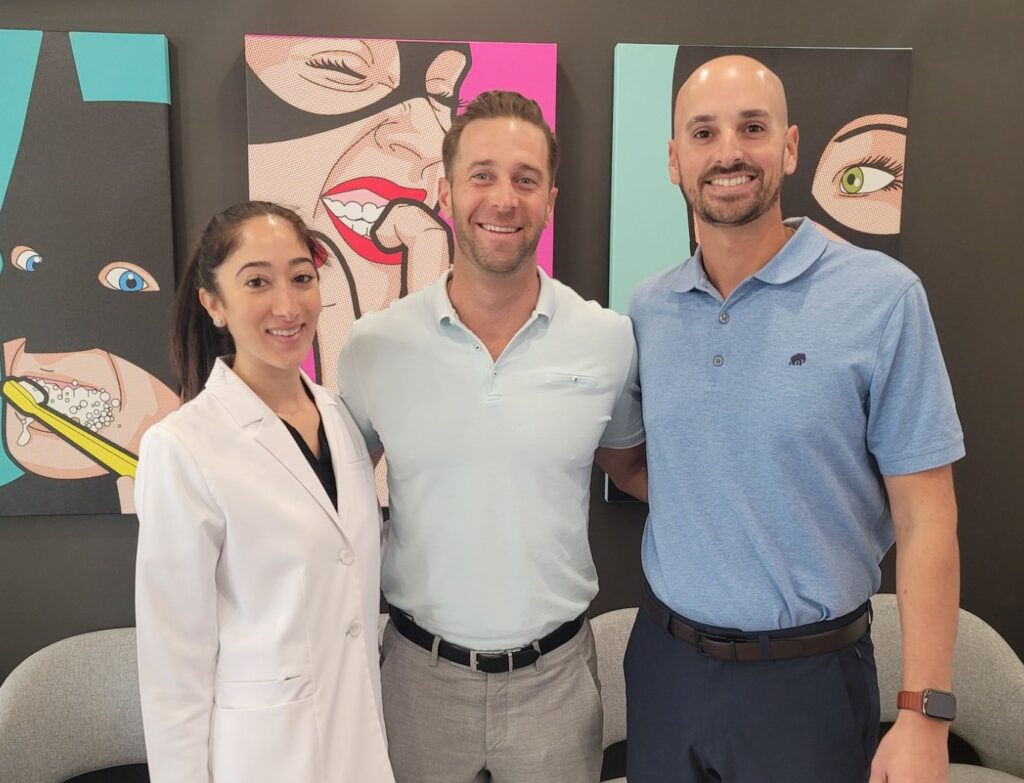When you get a new car, you have to adjust to it, keep it clean, and so forth. Braces are quite similar! Today, our team at Smiles of Palmetto Bay will cover the dos and don’ts when caring for braces.
Varieties of Braces
There are three main categories of braces and aligners. Before we talk about how to care for them, let’s discuss the differences.
- Metal braces are the go-to choice for our youngest patients, as they are both highly effective and highly durable—which can come in handy for kids. They are equally as reliable for adult patients, too.
- Clear braces are less durable but are still perfectly effective for teeth alignment. They can be a good compromise for patients who don’t want to opt for clear aligners but still desire a more subtle option.
- Invisalign is the most natural end of the spectrum. They are fitted to a patient’s teeth to the extent that they are hard to spot at first. Since they are a different manner of appliance, the care process is a bit different.
Covering Your Bases
There are a lot of important behaviors to bear in mind when you have braces to ensure that they are well looked after.
- Regular Office Visits: We’ll work with you from day one to create a treatment plan, which will include scheduled appointments every few weeks. These are integral to your treatment, as they allow us to monitor progress and make physical adjustments to your appliance. This usually involves tightening archwires and addressing repairs as needed.
- Brushing and Flossing: You will need to pay extra attention to brushing your teeth with braces, as you’ll now have more places for bacteria to become trapped. The same goes for flossing.
- Mouthwash: Using an antimicrobial or fluoride mouthwash is a great asset for your care routine. This not only helps to flush debris but strengthens your enamel over time.
- Orthodontic Wax: This is a common tool that you should carry with you. It can help create a barrier when damage creates sharp edges. We’ll expand more on what to include in your everyday kit later.
Building Your Toolkit
Since traditional braces can’t be taken off at will, it’s important to always be prepared for potential damage, as well as having the tools on hand for effective cleaning. Here’s a sample of what an everyday kit could look like, fitting in a small or medium cosmetic bag:
- Soft-Bristle Toothbrush
- Orthodontic Wax
- Floss Threader
- Interdental Brush
- Fluoride Mouthwash
- Toothpaste
- Mirror
What to Avoid
Now that we’ve covered the dos let’s review some of the don’ts of braces.
- Watch Your Diet: The food you eat can literally make or break your braces. Ingesting hard, sticky, or crunchy foods can all cause direct harm to your appliance. This might take some self-control, especially at first. You should also avoid chewing on ice.
- Ignoring Discomfort: When pain or discomfort becomes persistent or severe, you need to contact our office. We can address most orthodontic emergencies as well. The same word of caution goes for ignoring loose wires or brackets—damage should never wait to be addressed.
- Skipping Appointments: We’d argue this is as bad as skipping class. Again, promptly having our team assess any obvious damage is important, but routine maintenance and check-ups are, too.
- Bad Oral Habits: These can actually be unconscious behaviors: thrusting your tongue or pressing your tongue against your teeth can impact the movement of your teeth over time and interfere with treatment.
- Biting Non-Food Items: Chewing your nails or pen caps or ripping packaging open with your teeth can jeopardize your appliance.
- Sugar and Acid: Avoiding beverages that contain these two ingredients is a smart practice for any patient, but braces make you particularly vulnerable to their effects. Braces allow for more nooks and crannies in which sugar can stick around, resulting in bacteria and eventually decay. Sometimes, decay isn’t made apparent until after your braces come off. Demineralization can result in undesirable white spots on your new smile.
- Neglecting Mouthguards: If you play sports or practice other means of highly physical exercise, you should always have a mouthguard in. This provides an important barrier for your teeth and braces.
- Ignoring Your Dentist: Orthodontists and dentists have distinctions, but both are integral to your oral health. You should always still see your dentist as scheduled during your orthodontic treatment. We are looking for and addressing different things in your mouth, but our collaboration is key to your success!

Practice Makes Perfect
We’re always here for you to answer any questions you have—and you probably have a lot! Our Palmetto Bay office is always only a call away at 786-798-8058. Our team proudly serves adult, teenage, and pediatric patients. Dr. Ross and Dr. Iglesias can’t wait to start your orthodontic journey with you.
